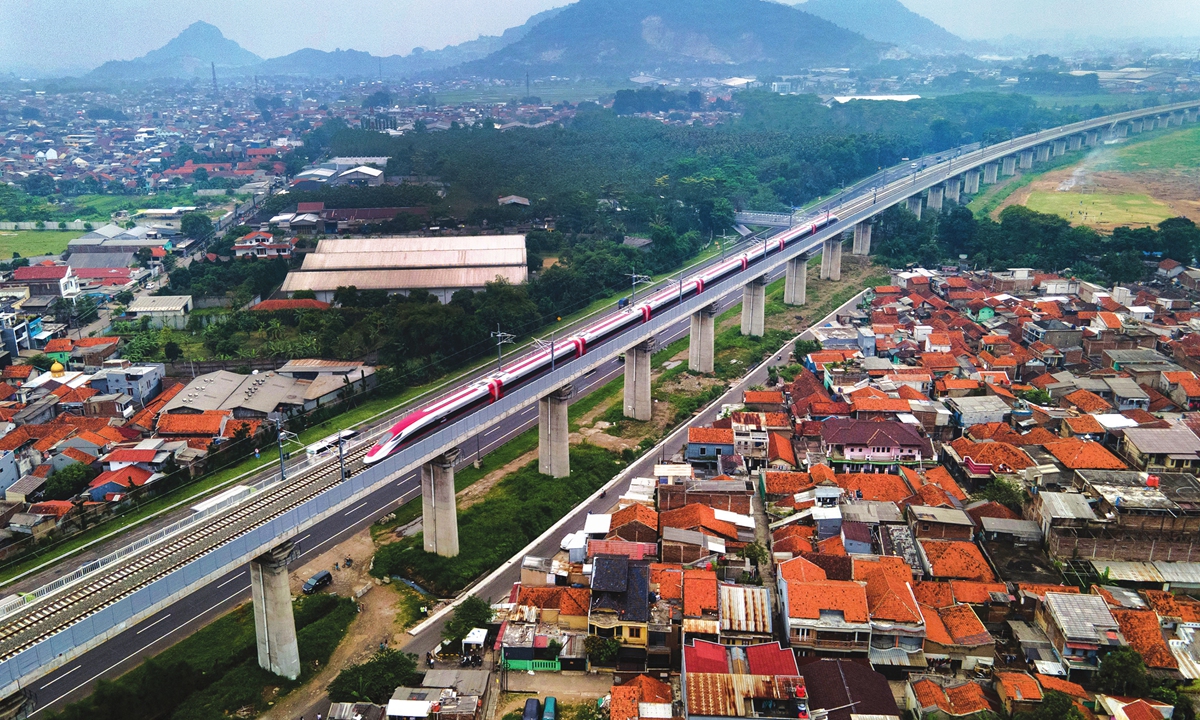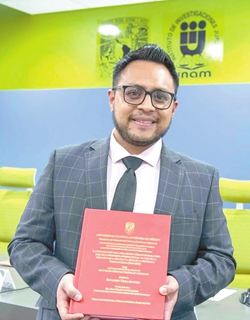
The Jakarta-Bandung High-Speed Railway, a BRI flagship project at Indonesia Photo: CFP
In recent years, Belt and Road cooperation has entered a new stage of high-quality development. There is no doubt that innovation has become one of the main features of the Belt and Road Initiative (BRI).
The initiative has evolved and adapted to the development needs of the present era, shifting from an infrastructure-focused initiative to a broader framework that facilitates technology transfer, capital flow, the delivery of global public goods and more.
The successes of the high-quality joint construction of the BRI between China and BRI partner countries demonstrates the feasibility of an approach centered on mutual understanding, complementary strengths and collaborative growth. This path of achieving mutual benefit becomes ever broader with each stride.
Reviewing discussions about BRI this year, a recurring theme emerges: "globalization." Celebrating its 11th anniversary, the BRI has firmly established itself as a major force shaping global discourse and trends in infrastructure development, technological innovation and the provision of global public goods.
In this context, the Chancay Port, a newly inaugurated flagship project of Belt and Road cooperation between China and Peru which officially opened in November, can be seen as the most profound and remarkable advancement of the initiative in Latin America in 2024. The port is poised to offer Peru and the broader South American region unprecedented transformations to logistics and infrastructure building, enhancing the region's connectivity to global trade networks and benefiting local economic growth.
BRI also highlights the transition toward green economies, providing partner countries with viable pathways to sustainable growth and underpinned by its ability to address their needs through tailored green development solutions. These achievements underscore China's growing role as a critical partner in the Latin American region's economic and social progress.

Eduardo Tzili-Apango Photo: Courtesy of Eduardo Tzili-Apango
The China-proposed BRI played a leading and innovative role in driving global growth and enhancing connectivity in 2024. China has signed over 230 Belt and Road cooperation documents with more than 150 countries on five continents and over 30 major international organizations. This widespread endorsement underscores China's ability to lead international collective action, attracting the majority of the world's nations with its mutually beneficial approach.
China has also injected innovative impetus along the BRI via various new energy projects, which has reoriented the sustainable global market to put new energy products, such as electric automobiles, to the reach of all. By doing so, the initiative is not only promoting global eco-sustainability but also ensuring that the benefits of the country's technological advancements are shared globally.
The development of the BRI has also made remarkable strides in connectivity technologies, particularly in 5G and big data. These actions are set to cultivate win-win cooperation especially between China and countries in the Global South, helping boost cross-Pacific economic integration and mutual prosperity.
Across the Latin American region, attitudes toward the China-proposed initiative have become more favorable in recent years, yet challenges still exist, such as a limited understanding of its scope and intricacies among locals.
Looking ahead, the strategic rivalry between the US and China will likely emerge as the primary obstacle to the initiative's progress. This competition plays a major role in influencing global perceptions and attitudes toward the BRI, which, in turn, could impact individual countries' engagement with its projects and initiatives. However, the BRI is expected to continue its steady growth trajectory due to its win-win nature, despite ongoing geopolitical challenges.
China and its partner countries should ramp up their efforts on the joint construction of the BRI projects while actively fostering positive and result-oriented cooperation to maximize the BRI's role in bridging the world. This will improve and reshape global perceptions of this major initiative, which is focused on improving livelihoods and fostering economic development in partner countries.
The author is a professor and researcher at the Metropolitan Autonomous University in Mexico, specializing in studies on the Belt and Road Initiative and Global Public Goods.





